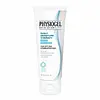What's inside
What's inside
 Key Ingredients
Key Ingredients

No key ingredients
 Benefits
Benefits

 Ingredients Side-by-side
Ingredients Side-by-side

Water
Skin ConditioningGlycerin
HumectantDipropylene Glycol
Humectant2,3-Butanediol
HumectantNiacinamide
SmoothingCaprylic/Capric Triglyceride
Masking1,2-Hexanediol
Skin ConditioningPropanediol
SolventPanthenol
Skin ConditioningPentylene Glycol
Skin ConditioningSqualane
EmollientNylon-12
Coco-Caprylate/Caprate
EmollientCentella Asiatica Extract
CleansingHydrolyzed Sodium Hyaluronate
Skin ConditioningSodium Hyaluronate Crosspolymer
HumectantPolymethylsilsesquioxane
Acetamide Mea
HumectantPalmitamide Mea
Sarcosine
Skin ConditioningTocopherol
AntioxidantCeramide NP
Skin ConditioningHydrogenated Lecithin
EmulsifyingDipotassium Glycyrrhizate
HumectantCopper Tripeptide-1
Skin ConditioningCarbomer
Emulsion StabilisingSodium Polyacrylate
AbsorbentSclerotium Gum
Emulsion StabilisingHdi/Trimethylol Hexyllactone Crosspolymer
Ethylhexylglycerin
Skin ConditioningTrisodium EDTA
Tromethamine
BufferingWater, Glycerin, Dipropylene Glycol, 2,3-Butanediol, Niacinamide, Caprylic/Capric Triglyceride, 1,2-Hexanediol, Propanediol, Panthenol, Pentylene Glycol, Squalane, Nylon-12, Coco-Caprylate/Caprate, Centella Asiatica Extract, Hydrolyzed Sodium Hyaluronate, Sodium Hyaluronate Crosspolymer, Polymethylsilsesquioxane, Acetamide Mea, Palmitamide Mea, Sarcosine, Tocopherol, Ceramide NP, Hydrogenated Lecithin, Dipotassium Glycyrrhizate, Copper Tripeptide-1, Carbomer, Sodium Polyacrylate, Sclerotium Gum, Hdi/Trimethylol Hexyllactone Crosspolymer, Ethylhexylglycerin, Trisodium EDTA, Tromethamine
Water
Skin ConditioningGlycerin
HumectantBetaine
HumectantPropanediol
SolventTrehalose
HumectantPanthenol
Skin ConditioningPhenoxyethanol
PreservativeAcrylates/C10-30 Alkyl Acrylate Crosspolymer
Emulsion StabilisingBifida Ferment Lysate
Skin ConditioningAminomethyl Propanol
BufferingAllantoin
Skin ConditioningDisodium EDTA
Hydrolyzed Glycosaminoglycans
HumectantEthylhexylglycerin
Skin ConditioningBeta-Glucan
Skin ConditioningCellulose
AbsorbentSaccharomyces Cerevisiae Extract
Skin ConditioningSodium Benzoate
MaskingCaprylyl Glycol
EmollientWater, Glycerin, Betaine, Propanediol, Trehalose, Panthenol, Phenoxyethanol, Acrylates/C10-30 Alkyl Acrylate Crosspolymer, Bifida Ferment Lysate, Aminomethyl Propanol, Allantoin, Disodium EDTA, Hydrolyzed Glycosaminoglycans, Ethylhexylglycerin, Beta-Glucan, Cellulose, Saccharomyces Cerevisiae Extract, Sodium Benzoate, Caprylyl Glycol
Ingredients Explained
These ingredients are found in both products.
Ingredients higher up in an ingredient list are typically present in a larger amount.
Ethylhexylglycerin (we can't pronounce this either) is commonly used as a preservative and skin softener. It is derived from glyceryl.
You might see Ethylhexylglycerin often paired with other preservatives such as phenoxyethanol. Ethylhexylglycerin has been found to increase the effectiveness of these other preservatives.
Glycerin is already naturally found in your skin. It helps moisturize and protect your skin.
A study from 2016 found glycerin to be more effective as a humectant than AHAs and hyaluronic acid.
As a humectant, it helps the skin stay hydrated by pulling moisture to your skin. The low molecular weight of glycerin allows it to pull moisture into the deeper layers of your skin.
Hydrated skin improves your skin barrier; Your skin barrier helps protect against irritants and bacteria.
Glycerin has also been found to have antimicrobial and antiviral properties. Due to these properties, glycerin is often used in wound and burn treatments.
In cosmetics, glycerin is usually derived from plants such as soybean or palm. However, it can also be sourced from animals, such as tallow or animal fat.
This ingredient is organic, colorless, odorless, and non-toxic.
Glycerin is the name for this ingredient in American English. British English uses Glycerol/Glycerine.
Learn more about GlycerinPanthenol is a common ingredient that helps hydrate and soothe the skin. It is found naturally in our skin and hair.
There are two forms of panthenol: D and L.
D-panthenol is also known as dexpanthenol. Most cosmetics use dexpanthenol or a mixture of D and L-panthenol.
Panthenol is famous due to its ability to go deeper into the skin's layers. Using this ingredient has numerous pros (and no cons):
Like hyaluronic acid, panthenol is a humectant. Humectants are able to bind and hold large amounts of water to keep skin hydrated.
This ingredient works well for wound healing. It works by increasing tissue in the wound and helps close open wounds.
Once oxidized, panthenol converts to pantothenic acid. Panthothenic acid is found in all living cells.
This ingredient is also referred to as pro-vitamin B5.
Learn more about PanthenolPropanediol is an all-star ingredient. It softens, hydrates, and smooths the skin.
It’s often used to:
Propanediol is not likely to cause sensitivity and considered safe to use. It is derived from corn or petroleum with a clear color and no scent.
Learn more about PropanediolWater. It's the most common cosmetic ingredient of all. You'll usually see it at the top of ingredient lists, meaning that it makes up the largest part of the product.
So why is it so popular? Water most often acts as a solvent - this means that it helps dissolve other ingredients into the formulation.
You'll also recognize water as that liquid we all need to stay alive. If you see this, drink a glass of water. Stay hydrated!
Learn more about Water